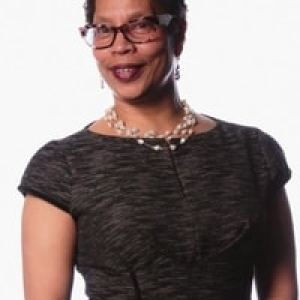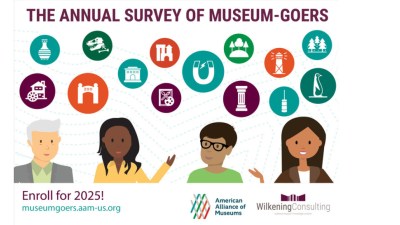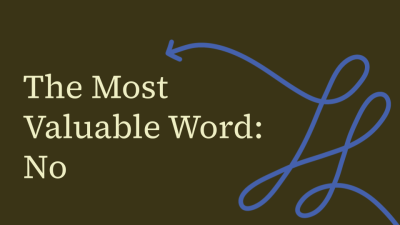
Many years ago, I had the opportunity to prepare my museum and the local communities for a science exhibition presenting race as a social construct. As we discussed the best way for our internal team to support visitors in the exhibit, we quickly recognized that people would need their personal space and privacy to engage with the information on their own, rather than our usual inquiry-based methods of engagement. We decided that team members should remain available in the space for questions but refrain from initiating conversation with the visitors as they toured the exhibition. Though we were initially concerned this could make for a somber or tense environment, instead it resulted in a space full of lively, open discussions between groups of people, families, and the team—a learning environment with opportunities for both individual and group learning.
I’m reminded of this situation because it demonstrates the push and pull I feel exists between the self and the collective environment when undertaking diversity, equity, accessibility, and inclusion (DEAI) work. There is a certain tension between learning about these subjects on your own and learning in a group setting—the latter being where you are perhaps the most vulnerable but also have the greatest opportunity for a shift in perspective. While discussing these topics I believe we become keenly aware of our own identities—race, gender, social class, ability, and others; and it encourages us to step outside ourselves to consider the perspectives of people we talk with and hear from. In my own experiences, exploring DEAI concepts in a group has not only stimulated growth in my understanding of other cultural perspectives, but has challenged me to look within myself and examine long-held beliefs, biases, and fears—rational or irrational. Despite the hard work required to look within, I am rewarded by learning to engage with people in ways that are more inclusive.
My perspective regarding DEAI learning is informed, in part, by the seminal report from the working group who preceded the Facing Change initiative, Insights from the American Alliance of Museums’ Diversity, Equity, Accessibility, and Inclusion Working Group, led by former AAM Director of Inclusion Dr. Nicole Ivy. Of the five key insights the report shares, the first resonates most deeply with me: “Every museum professional must do personal work to face their unconscious bias.” I believe this with conviction; it begins and ends with the self and how we decide to show up in the world and in our work. Each of us, regardless of our background, our education, our experiences, or so on, has personal work to do on our belief systems about ourselves, our groups, other groups, other people, and about the world around us. We have the opportunity to acknowledge, educate, and then address our biases, but it is not always easy work to do, and we are not always prepared to take the steps or the big leap to a higher understanding about other people or groups. Museum DEAI work asks us first as individuals, and secondly as practitioners in the field, to look within ourselves and accept the personal responsibility required to shift our perspectives and engagements with others. Some of this comes from what we learn on our own, but I believe we gain the most when we do it in a group setting, especially when we have the courage to risk revealing our true selves in order to rise in our awareness about others. As a result, when we know better, we can do better.
Yet I feel equally as strongly that “each one teaches one” and we have to “reach back and bring one along.” In other words, being vulnerable enough to learn with others is a powerful way to grow in understanding and acceptance. The benefits of shared learning are the same today as what we learned early in school—there are no wrong questions; regardless of the question, it’s important to explore our thoughts. This is what happens in a shared learning environment and is especially valuable in a DEAI setting. In a safe DEAI space, you ask and hear questions that you may have considered, and some that you have not, but you get to learn something in the process. Sometimes you learn another way to express concepts that you can pass on to others. Sometimes you learn a different way to think about your own viewpoints and it changes you. Sometimes you hear other people say things that make you cringe in disbelief that someone really thinks or feels that way. And sometimes you’re the one who’s saying that cringeworthy thought. But it’s through this process that you come to understand we are all trying to do our best, regardless of how our questions sound, and it’s the courage and willingness to show up in the world that is worth the effort to do the work.
Skip over related stories to continue reading articleThere is so much value in shared learning. As the saying goes, knowledge is not valuable unless you share it. The questions asked and statements made spur dialogue and encourage each of us to ponder how we see the world through our own individual lens. As I embark on this work, it has been as true for me in learning among the cohort of Facing Change fellows as it has been in working with the Facing Change museum partners. We recently held retreats around the country for the participating museums to take those early steps of dialogue in the multi-year journey they are joining us on. The retreats provided the museums a unique opportunity to discuss and delve into DEAI topics away from the office, in a background that puts DEAI front and center of the museum operations work. As I walked around the room at several of the retreats, I could hear snippets of conversations that moved from whispers to uproarious laughter, from heads nodding in agreement to long gazes deep in thought and reflection. This is complex work, I thought; this is work that can open us up or close us down or sometimes just leave us somewhere in between—all of which is okay.
As the Insights report elaborates, “This internal, personal work is work. It calls for study, skill-building, and practice…these skills can be built at the individual or organizational level; the steps are the same. Self-work strengthens the foundation for institutional work.” Although the focus begins with personal work, collective learning—whether in our cohort, among our museum partners, or within their own institutions—provides important space to explore our cultural competency through sharing our experiences, challenges, successes, and questions. This is how learning in a group becomes so dynamic: you get to know yourself better through your exchanges with your colleagues. Sometimes we think we’ve done the personal work, and sometimes we have. But…sometimes when placed in a group learning setting, we realize where there is more work to do. As a favorite proverb of mine goes, “Keep trying, keep trying, keep trying. Trust the process. Surrender. Now allow something better than you allowed yourself to imagine to happen.” This is a constant dance, but one worthy to undertake, as we grow and rise through the process.









Comments